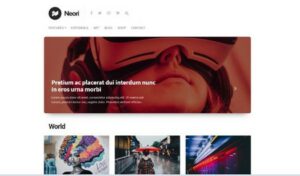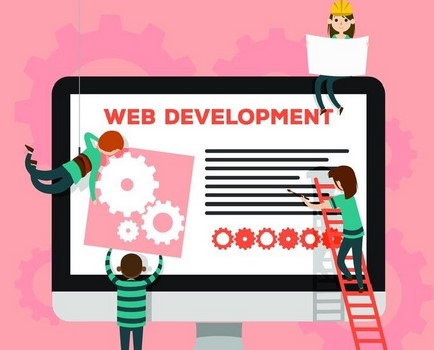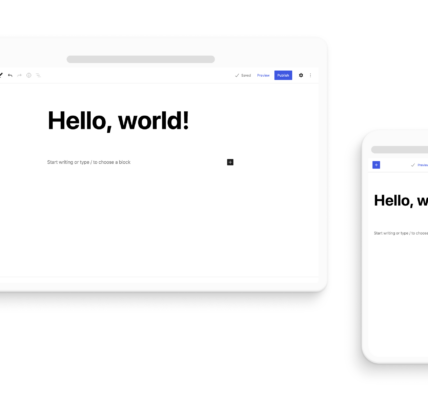The Art and Science of WordPress Website Design
In the vast realm of the internet, where digital landscapes evolve, a well-designed website is the beacon that guides users through a seamless journey. This article embarks on an exploration of WordPress website design, delving into the nuances of creating engaging, functional, and aesthetically pleasing online spaces.

The WordPress Revolution
Foundation of Versatility:
WordPress, initially a blogging platform, has evolved into a versatile Content Management System (CMS). Its user-friendly interface and extensive plugin ecosystem empower designers to create diverse websites.
Open-Source Innovation:
As an open-source platform, WordPress benefits from a collaborative community. Developers worldwide contribute to its constant evolution, ensuring that it remains adaptable to emerging design trends and technological advancements.
Elements of Stellar WordPress Design
Intuitive Navigation: A well-designed WordPress site prioritizes user experience. Intuitive navigation ensures visitors can effortlessly explore the site, find information, and engage with its content.
Responsive Design: In the era of diverse devices, responsive design is paramount. WordPress allows designers to create websites that seamlessly adapt to various screen sizes, providing a consistent and enjoyable experience across platforms.
Engaging Visuals: Visual elements are the heart of web design. WordPress enables designers to incorporate high-quality images, videos, and graphics, enhancing the visual appeal and storytelling aspect of a website.
Themes: Tailoring Aesthetic Identities
Customization Flexibility: WordPress themes serve as the visual foundation of a website. The platform offers a vast array of both free and premium themes, providing designers with the flexibility to tailor the site’s aesthetic identity to match brand or content needs.
Mobile-Friendly Themes: Given the prevalence of mobile users, selecting a mobile-friendly theme is crucial. WordPress ensures that themes are optimized for mobile responsiveness, guaranteeing a seamless experience for users on smartphones and tablets.
Custom Theme Development: For a truly unique design, custom theme development allows designers to create tailored solutions. This approach ensures that the website aligns precisely with the brand’s identity and specific functional requirements.
Plugins: Enhancing Functionality
Versatile Functionalities: WordPress plugins are like digital Lego bricks, offering a myriad of functionalities. From SEO optimization to e-commerce integrations, plugins empower designers to enhance the website’s capabilities without delving into complex coding.
Performance Optimization: Performance is paramount in website design. WordPress plugins address issues related to speed, caching, and optimization, ensuring that the site loads swiftly, providing a seamless user experience.
Security Measures: Security is a top priority in the digital landscape. WordPress plugins bolster website security, protecting against potential threats and vulnerabilities, and offering peace of mind to both designers and site owners.
User-Centric Content Creation
Gutenberg Editor: WordPress introduced the Gutenberg block editor, revolutionizing content creation. The drag-and-drop interface simplifies the process, allowing designers to craft visually appealing and dynamic content without intricate coding.
Content Hierarchy: Effective content design emphasizes hierarchy. WordPress enables designers to structure content through headings, subheadings, and multimedia, guiding users through a logical and engaging narrative.
Multimedia Integration: Beyond text, multimedia elements play a vital role. WordPress facilitates seamless integration of images, videos, and audio, providing designers with tools to create compelling, interactive content.
E-Commerce Capabilities
WooCommerce Integration: For those venturing into online commerce, WooCommerce stands as a robust e-commerce plugin seamlessly integrated with WordPress. Designers can create visually appealing online stores with diverse product displays and seamless checkout processes.
Payment Gateways: WordPress supports various payment gateways through plugins, allowing designers to incorporate secure and convenient payment options, fostering trust and facilitating smooth transactions for online shoppers.
Product Showcase: Designers leverage WordPress capabilities to showcase products effectively. High-quality visuals, detailed product descriptions, and user-friendly interfaces contribute to a positive shopping experience.
SEO-Friendly Design Practices
Optimized Content: WordPress facilitates SEO-friendly content creation. Designers can optimize meta titles, descriptions, and images, ensuring that the website ranks well on search engines and attracts organic traffic.
Permalink Structure: A well-structured URL is vital for SEO. WordPress allows designers to customize permalink structures, creating clean and descriptive URLs that contribute to search engine visibility.
Mobile Optimization: Google’s emphasis on mobile-first indexing makes mobile optimization crucial for SEO. With responsive design features, WordPress ensures that websites are well-received by search engines across devices.
Collaborative Design Workflows
User Roles and Permissions: In collaborative settings, WordPress user roles and permissions allow designers to control access. This ensures that team members have appropriate levels of authority, maintaining a structured and secure design workflow.
Revision History: WordPress keeps track of content revisions, providing designers with the ability to revert to earlier versions if needed. This feature streamlines collaboration, offering a safety net for design experimentation.
Staging Environments: Designers can test and refine their creations in staging environments before deploying changes to live sites. This minimizes the risk of errors and ensures a polished website experience for users.
Future Trends and Adaptability
Dark Mode Design: Reflecting modern design aesthetics, dark mode has gained popularity. WordPress themes and designs are adapting to incorporate dark mode, providing users with an alternative visual experience.
Voice Search Optimization: As voice-activated devices become ubiquitous, optimizing for voice search is emerging as a design trend. WordPress designers are exploring ways to enhance websites for voice-initiated interactions.
Artificial Intelligence Integration: The integration of AI elements, from chatbots to personalized content recommendations, is on the rise. WordPress designers are exploring AI-powered features to enhance user engagement and satisfaction.
Conclusion: Designing Tomorrow’s Digital Realms
In the dynamic landscape of digital design, WordPress stands as a powerful ally for creators. From intuitive content creation to the integration of cutting-edge technologies, the platform empowers designers to shape online experiences that captivate, inform, and inspire. As the journey of WordPress website design unfolds, designers continue to push boundaries, creating digital realms that not only meet the current needs of users but also anticipate and adapt to the evolving trends of tomorrow.





